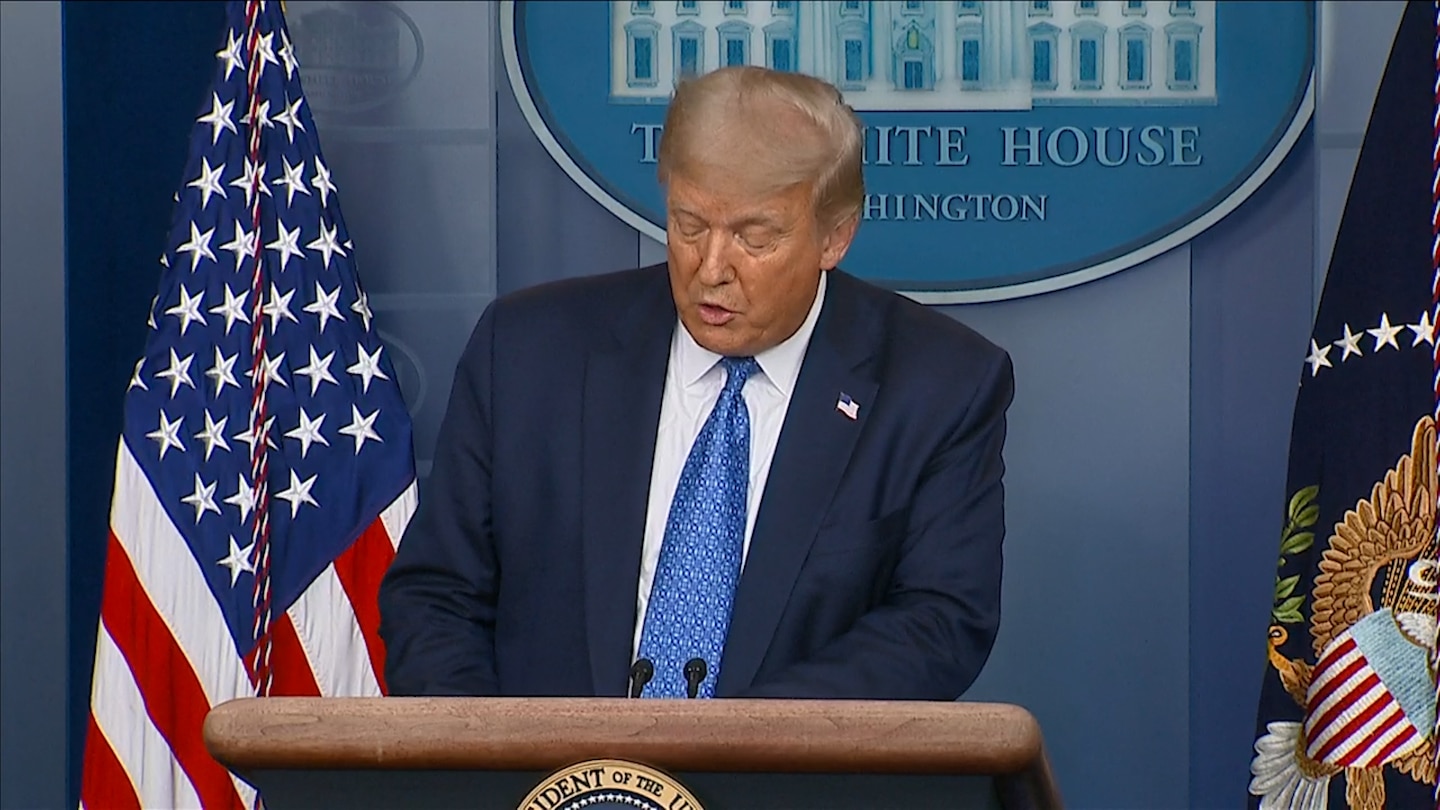Trump tried to blame Black Lives Matter protests for the coronavirus surge. Data doesn’t support his claim.

Trump, never a staunch adherent to the concept of subtlety, tried to put a fine point on where he thinks blame should lie for the recent surge in new cases.
“There are likely a number of causes for the spike in infections,” he said. “Cases started to rise among young Americans shortly after demonstrations, which you know very well about, which presumably triggered a broader relaxation of mitigation efforts nationwide.”
“A substantial increase in travel also was a cause,” he added. “Increased gathering on holidays such as Memorial Day, as well as young people closely congregating at bars and probably other places.”
That he led with the demonstrations — national Black Lives Matter protests that emerged following the killing of George Floyd when a Minneapolis police officer knelt on his neck — was pointed. His allies have consistently pointed to the protests as the cause of the surge, for the same reason that Trump does: It shifts blame.
That Trump additionally blamed the protests for “triggering a broader relaxation of mitigation efforts,” however, is ludicrous. It’s Trump himself who triggered that relaxation, pushing states months ago to scale back efforts to contain the virus — again because he worried that slower economic activity would hurt his reelection chances.
It’s a point worth considering, though: Were those large protests a trigger for the surge?
The data suggests that they weren’t. A working paper released last month by the National Bureau of Economic Research found “no evidence that urban protests reignited COVID-19 case growth during the more than three weeks following protest onset.”
Nor are the states where cases surged the most ones in which the largest protests occurred. The eight states that added the most new daily cases relative to the daily average on the day Floyd died were Montana, Alaska, Idaho, Florida, South Carolina, Texas, Oregon and Arizona. While there were protests in each of those states, most were fairly small.
There were protests in every state around June 1, in fact, with many of the largest in California and New York. Protests in D.C. gained national attention after the White House forcibly broke one up to allow Trump to have a photo op at a nearby church.
One would expect new cases to show within two weeks of infection, by about June 15. California did add cases after May 25, which the mayor of Los Angeles attributed in part to the protests in his city. (Experts have raised questions about the link, in part because the daily average of new cases in the county was already rising.) But in New York and D.C., cases declined in the weeks after the protests. Cases also declined in Minnesota, the epicenter of the protests as the site of Floyd’s killing.
It’s admittedly often hard to trace the source of these outbreaks with specificity. The mayor of Los Angeles isn’t the only public official to link protests to new cases; a health official in Tulsa pointed to the protests as a reason cases resurged in his city — along with a political rally held by Trump.
Shortly after Trump spoke to the press, though, another expert weighed in. Deborah Birx, the White House coronavirus response coordinator, was interviewed by Fox News’s Bret Baier.
She noted that the recent surge was unlike the surge that engulfed the Northeast in March and April.
“This time we saw wide virus spread across counties, across rural areas, across small metros and big metros, all the way across the South, Southwest and West almost simultaneously,” she said. “So this is an event that we think can be traced to Memorial Day and opening up and people traveling again and being on vacations.”
The same mention of Memorial Day — but none of the protests. Of course, she’s not running for reelection.






